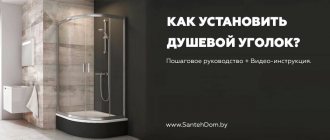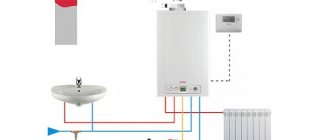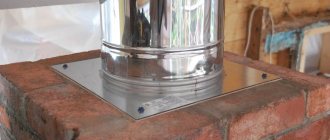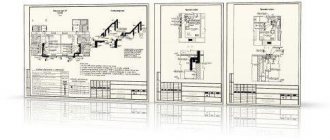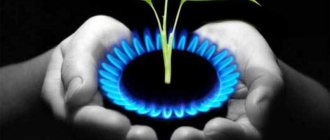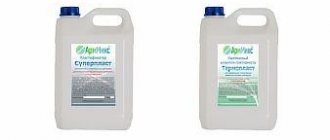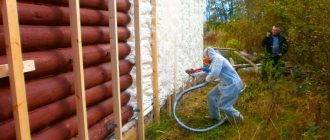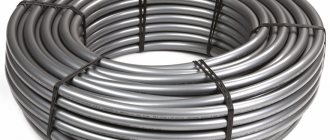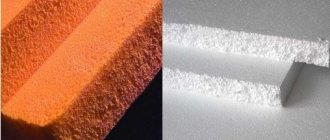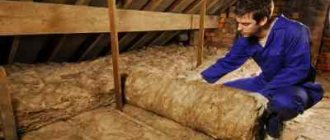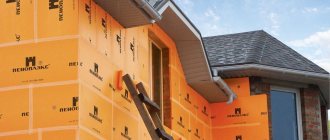The high-pressure unit pumps out components from 200 liter drums using barrel pumps, which are lowered and fixed to the neck of each barrel. Then the components enter the main pump of the installation, having previously passed through the heating unit. Then the main drive of the installation supplies the heated components under high pressure into the working hose (sleeve), which also has its own heating system. A spray gun is mounted at the end of the working hose. For the convenience of the operator, the thermal casing does not reach 3 meters to the gun itself. This allows the operator to move his hand more freely. The system for supplying components to the spray gun is designed differently by all manufacturers. But in any case, this method of spraying components is airless . This means that the components come out of the gun as a torch with no air in it. In high pressure installations, air is supplied to the gun only to clean the nozzle.
HOW TO QUICKLY GET ALL INFORMATION ABOUT TECHNOLOGY
A two-component material obtained by mixing a polyol and an isocyanate. Polyurethane foam can be applied either by spraying or by pouring. Foam can be sprayed from high and low pressure units, as well as from portable disposable kits. The main property of sprayed polyurethane foam insulation is density. Varies from 8 -300 kg/m3. Density is determined by the component type, not by the installation settings. The higher the density, the less the material’s ability to absorb moisture and the greater the consumption of components. In some cases, polyurethane foam can be sprayed onto the base without the use of adhesives.
Two-component elastic membrane. Obtained by spraying two components of a polyol and an isocyanate resin. Pure polyurea is applied by spraying only from high pressure installations. Polyurea hybrids can be sprayed from cartridges using air guns and manually. The main property of polyurea is abrasion resistance (according to SHOR), as well as tear resistance. The base for polyurea spraying almost always needs to be treated with primers and carefully prepared mechanically.
Low pressure devices
Low pressure devices are used only for insulating polyurethane foam in small small areas: loggia, basement, attic or balcony. Due to low productivity, spraying will take a lot of time, so we recommend performing work on low-pressure installations on objects up to 500 m2, maximum up to 1000 m2.
Low pressure spraying process
During the air spraying process
The supply of components to the spray gun is carried out by motors on the installation, and spraying is carried out by air from the compressor. Mixing of the components occurs in the mixing chamber of the spray gun only due to air from the compressor, which affects the quality of the polyurethane foam. The spraying process is continuous.
When the supply of components is turned on, 2–3 seconds pass before the spraying begins; also, when the supply is turned off, the components arrive within 2–3 seconds, which leads to an overconsumption of components. A polyurethane cloud is created in the spraying working area, which impairs visibility.
In the process of “combined” spraying
With low-pressure apparatuses, components are supplied due to low pressure (up to 5 atmospheres) in containers with components. Mixing and then spraying occurs with the help of air from the compressor and pressure from the containers; the components are mixed better. With combined spraying, consumption is reduced compared to the air spraying method.
TECHNOLOGY FEATURES
Unlike roll bitumen waterproofing materials and slab/roll insulation materials, sprayed polyurea and polyurethane foam are seamless insulation systems. As a result of spraying, you get an ideal carpet without seams and cold bridges with high-quality bypass of all junctions and joints. The main thing is that all anchors and mounting elements are already installed on the base.
Spraying work should always be carried out on a prepared base. When working with polyurethane foam, the minimum surface temperature can reach 0°C (special components), but with polyurea everything is much more complicated. The temperature of the base under the PM should not be lower than +5°C. Also, drops of water and even wet areas of the base are not allowed.
HIGH PRESSURE UNIT MANUFACTURERS
The equipment overview provides a brief description of the key parameters and main characteristics. A review of high-pressure installations for spraying polyurea and polyurethane foam is not a recommendation from one manufacturer or another. You must decide for yourself which type of machine will be more convenient for you to work with in the future.
To save your time, we recommend that you write a request to our e-mail and we will send it to specialists from equipment manufacturing companies. In the letter, indicate your full contacts and detailed terms of reference (what you plan to do).
Graco (USA) – REACTOR
High pressure units with electric drive of the dosing unit. The most common installations among PPU contractors. They are successfully promoted through a wide dealer network.
Garraf Maquinaria, SA (Spain) – GAMA EVOLUTION
The second most popular equipment for working with polymer protective coatings. The range of machines includes units with hydraulic and pneumatic drive. Also, some professional devices can operate from a 220V network.
TEC MAC (Italy) – ISOLTEC
Pneumatic and hydraulic high-pressure installations for spraying polyurethane foam and polyurea. One of the simplest and most reliable installations. They have been introduced to the Russian market relatively recently, but are confidently gaining the trust of contractors.
Wilhelm Wagner GmbH & Co. KG WIWA (Germany) – DUOMIX
Pneumatic and hydraulic high-pressure installations for spraying polyurethane foam and polyurea. European quality for reasonable money.
NINGBO DINO-POWER MASHINERY Co (China) – DINO-POWER
One of the rarest installations on the Russian market of spraying equipment. About 5 years on the Russian equipment market.
PMC Global Inc (USA) – HP SERIES
Classic American high-pressure installations for spraying multicomponent polymer coatings. The most common cars in the United States of America. They are imported to Russia only by special order.
Energy (Russia) – PROTON EVOLUTION
Little-known equipment from a Russian manufacturer. Practically not found among PPU contractors. Sold only through the manufacturer.
INTERSKOL (Russia) – N; E; R;
At the beginning of 2016, the Russian manufacturer of electrical equipment released four lines of installations for spraying polyurethane foam and polyurea, as well as its hybrids.
JINAN SAIJUN TECHNOLOGY (China) – FD
Chinese manufacturer of professional equipment for processing polyurethane foam components. The line of installations includes only machines for spraying and pouring polyurethane foam. However, a professional gun with an internal mixing chamber is used.
Types of filling polyurethane foam
The polyurethane foam filling installation is a mechanized complex, inside which two liquid components are mixed qualitatively. It is a polyol and isocyanate. According to the documentation adopted in the Russian Federation, polyol is labeled as component A, isocyanate as component B. A dosed volume of these liquids is supplied to the mixing chamber.
IMPORTANT! The components are thoroughly mixed in the chamber. This function is performed by a dynamic mixer without the use of compressed air. The composition obtained as a result of mixing is fed into a form prepared specifically for this operation. A similar process is called polyurethane foam filling.
There are a number of excellent domestic manufacturers of installations for filling. The most popular products on the Russian polyurethane foam market are aggregates, Moscow. The company is an industry leader and offers its partners various types of machines for pouring polyurethane foam:
PK-60 – 60 liters per minute;
PK-90 – 90 liters per minute;
PK-200 – 200 liters per minute.
Each unit differs slightly from the others in its design, mainly in performance. The basis of all complexes:
- filling unit;
- hydropneumatic capacity;
- pump dosing device.
The remaining components and mechanisms are additional options used to automate, simplify, and control the quality of the pouring process. Depending on the type of foam used and performance, each filling foam is equipped with them. You can buy such equipment on the Internet portal and through the sales department of the enterprise.
Differences in machine performance
Each filling machine has its own production volumes and individual power characteristics. It is not difficult to buy equipment for pouring polyurethane foam, however, before purchasing it is necessary to clearly analyze your own needs for this equipment. The unified classification of polyurethane foam filling equipment provides for the production of two groups of machines:
- Small, with a filling capacity of up to 12 liters per minute.
- Large, with a filling capacity of up to 48 liters per minute.
NOTE!
Small units are equipped with 3G electric motors with a power of 0.75 kW and a voltage of 220 V. The rotor rotates under load inside the mixing chamber with a frequency of 3000 - 4200 rpm. The volume of the mixing chamber is 200 cm³. Manufacturer's warranty: one year from the date of commissioning into permanent operating mode, but no later than 90 days from the date of sale.
Large units are equipped with 3G electric motors with a power of 0.75 kW and 1.1 kW, a voltage of 380 V. The rotor rotates under load inside the mixing chamber with a frequency of 3900 - 4500 rpm. The volume of the mixing chamber is 280 and 340 cm³. Manufacturer's warranty: one year from the date of commissioning into permanent operating mode, but no later than 90 days from the date of sale.
Difference in linear and autonomous operation
When operating low-pressure units, the components are mixed in a mixing chamber with a working pressure of 6-10 atm. When pouring, the entire mass is mixed with a mixer. The latest models produced by Polymer-Complex PC are equipped with polyol and isocyanate heating units.
The high-pressure polyurethane foam system mixes components in a mixing chamber at an operating pressure of 140 atm. With this technology, the components are mixed, penetrating each other. The price for a high-pressure installation on the polyurethane foam market reaches 300,000 rubles. The polyurethane foam filling system in Moscow involves the parallel operation of both low and high pressure units.
ADDITIONAL INFORMATION
Autonomous operation of the PU foam filling machine consists in the complete independent functionality of the unit. Mixing of liquid substances is carried out in a closed chamber. Next, the mixture flows through a rod with slot-shaped nozzles into the poured mold. Polymerization of the resulting emulsion is achieved instantly through a spray torch on the surface of the base.
The installation is equipped with special guns to accurately hit the foam jet into the mold. The productivity is 6-20 liters per minute. This is how an autonomous pouring machine works. The installation price is 50-100 thousand rubles. Linear pouring machines are not much different from their stand-alone counterparts. They successfully work on main pipeline routes and bridge construction.
Their filling molds are much larger. Linear units have a capacity from 10 to 500 liters per minute. The cost of such units is 300,000 - 500,000 rubles or more.
Equipment advantages
- Many years of experience and professionalism of the company’s specialists. Work in Russian and foreign markets since 1989.
- Flexible pricing policy and discount system.
- Short delivery and setup times for equipment.
- Numerous diplomas and certification of all products.
- The company is a leader in the Russian market and a supplier to numerous foreign partners.
Conclusion
When purchasing equipment for pouring polyurethane foam, each owner of his own production must calculate its capacity and the need for the purchase of such equipment. You should also know exactly the volume of expected work on pouring polyurethane foam.
Particularly careful calculations must be made when selling products filled with polyurethane foam, the presence of interested buyers, market needs, and transportation and procurement costs. Then all costs will quickly pay off and bring a decent profit to the owner of the enterprise.
Areas of application of polyurethane foam filling technology
Installations for pouring polyurethane foam are effective means of combating corrosion. Surfaces containing a layer of polyurethane foam have a high degree of resistance to wear. Similar technologies are used in all production areas:
- mechanical engineering;
- mining industry - conveyors, rollers, rubbing units;
- rubber industry;
- chemical, instrument-making, housing and communal services.
Using a layer of polyurethane foam can significantly reduce the cost of metal components and parts, bringing enormous savings.
